
Whether you’re a first home buyer looking to make the most of government incentives to purchase your starter home, or a seasoned investor ready to jump in, finding out which areas are tipped to boom could help you navigate your property purchase decisions in 2021. After all, it could be a year like no other.
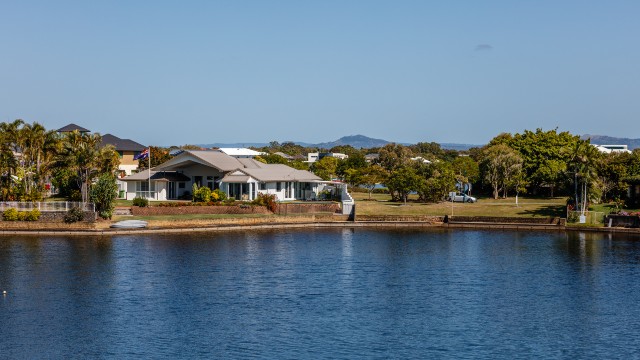 The Sunshine Coast was named among the top picks for property price growth in 2021. Image source: Gekko Gallery, Shutterstock.
The Sunshine Coast was named among the top picks for property price growth in 2021. Image source: Gekko Gallery, Shutterstock.
Real estate forecasters at Hotspotting have revealed their top 10 places to consider buying property around Australia in 2021 and beyond, with long-term capital gains expected in each location.
Managing director and property analyst Terry Ryder says this year is shaping up to be a strong one for the performance of the property market. He predicts buyers could be in for even more intense competition at sales than last year as investors re-enter the market, and national house prices could inflate by more than 10% on average.
Compare Home Loans with Canstar
If you’re currently considering a home loan, the comparison table below displays some of the variable rate home loans on our database with links to lenders’ websites that are available for first home buyers. This table is sorted by Star Rating (highest to lowest), followed by comparison rate (lowest-highest). Products shown are principal and interest home loans available for a loan amount of $350K in NSW with an LVR of 80% of the property value and that offer an offset account. Before committing to a particular home loan product, check upfront with your lender and read the applicable loan documentation to confirm whether the terms of the loan meet your needs and repayment capacity. Use Canstar’s home loan selector to view a wider range of home loan products.
What’s in store for the property market in 2021?
The exodus to living an affordable lifestyle, away from the city
Mr Ryder, who is also the founder of Hotspotting, thinks 2021 is shaping up to be a strong year for the property market after the COVID-19 pandemic has exacerbated a trend that was already underway in Australia – the exodus to living an affordable lifestyle.
“It’s a trend that’s been percolating away steadily for the last two or three years, but certainly picked up pace in the year of the pandemic, because of the lockdowns which alerted more people to the possibilities of working remotely and being able to access a different lifestyle more affordably, away from the big, expensive, congested cities,” Mr Ryder told Canstar.
“You could say that what was a steady trickle has turned into something more like a stampede as a consequence of the pandemic lockdowns.”
Data shows the extent to which regional Australia outperformed the combined capital cities market last year. Property research house CoreLogic found eight of the 10 suburbs that had the largest growth in house values in 2020 were regional locations, with Tasmania and Queensland dominating that list.
National house prices growth in the double-digits
Mr Ryder also expects we could see national average price growth in the double-digits, possibly “above 10% in some locations, and others well above that”. He said this would be at least partly due to the “ultra-low” vacancy rates in most parts of Australia, with the exceptions of inner Sydney and inner Melbourne.
“We have people who are looking for rentals and need to find somewhere to live, but they just can’t because there are so few available, and when something becomes available there are literally queues of 30, 40 or 50 people competing for the same rental property,” he said.
“Vacancies are that low, rental prices will be rising and when rental markets are strong, house prices will follow.”
Investors to re-enter the market
“It’s strange that investors have been so reluctant to get into the market because it’s a fantastic time to be an investment property owner, to be a landlord,” Mr Ryder said. “Everything’s in their favour in most, if not all, locations across Australia.”
Mr Ryder noted that although many experts had predicted 2020 would see a major negative impact on the Australian property market due to the pandemic, it turned out to be remarkably resilient as people “retreated to the solidity of bricks and mortar” during times of uncertainty. First home buyers in particular came out in droves, taking advantage of record-low mortgage interest rates and numerous home-buying incentives from the government, such as the First Home Loan Deposit Scheme and HomeBuilder grants. By comparison, investor numbers were comparatively subdued.
But as for this year, first home buyers might have a bit more competition to handle, with Mr Ryder expecting to see investors re-enter the market.
“I think we’re going to see investors a lot more prominent in 2021,” he predicted. “They tend to be reactive, follow the market trends rather than lead them. I think they’re going to be out in force this year, and that’s going to make some of the better markets even more intense in terms of competition.”
He said the lack of investors in 2020 had been one of the advantages for first-time buyers.
“They received the highest amount ever of government assistance for first-time buyers, the lowest-ever interest rates and the absence of investors as competitors – but this year that factor is going to change,” he said.
What hurdles can property buyers expect in 2021?
Mr Ryder expects intensity of competition and fast sales could be some of the biggest hurdles property buyers face in 2021. With that possibility comes a few words of caution from the property analyst.
“People spending a large sum of money on real estate want to buy with proper due diligence,” he said. “They want to be careful. They want to check things out. When markets are really hot and properties are selling quickly, it’s harder to do that.”
What makes a property market boom?
Mr Ryder said that spending on infrastructure – particularly transport, hospitals and universities – was the number one biggest factor that contributed to a property market’s growth.
“What we know to be true is that nothing pumps up residential property markets as strongly as major infrastructure spending,” he said.
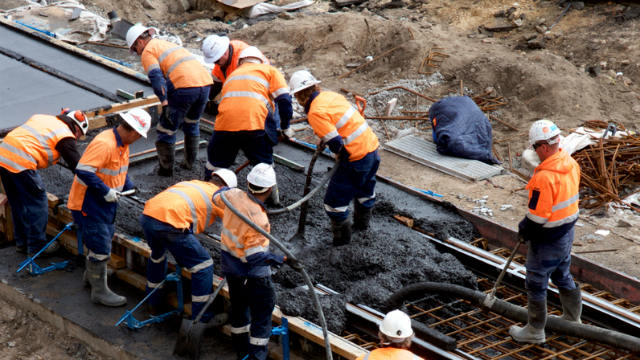 Hotspotting founder Terry Ryder says spending on infrastructure is a key contributor to property price growth. Image source: Michael Leslie (Shutterstock).
Hotspotting founder Terry Ryder says spending on infrastructure is a key contributor to property price growth. Image source: Michael Leslie (Shutterstock).
The development of shopping facilities like Coles and Woolworths can also have an impact on a property market’s prospects, he said, but not as much as large infrastructure spending, including on the development of motorways, rail links, tunnels and bridges.
When picking out the top property hotspots for 2021 (see below), Mr Ryder said he and his company’s analysts looked for areas that had the best prospects for uplift based on what was happening in their local economies.
Infrastructure spending is a key part of that, but so is how the local economy fits with the prevailing trends that are dominant in Australian real estate at the moment – one of which is the movement to regional areas for a more affordable lifestyle.
Top 10 property hotspots in Australia
These are the 10 best locations in Australia for property investors seeking capital growth in their next investment in 2021 and beyond, according to Hotspotting:
- Sunshine Coast, Queensland
- Bendigo, Victoria
- Rockingham, Western Australia
- Central Coast, New South Wales
- Toowoomba, Queensland
- Blacktown, New South Wales
- Marion, South Australia
- Orange, New South Wales
- Moreton Bay Region, Queensland
- Monash, Victoria
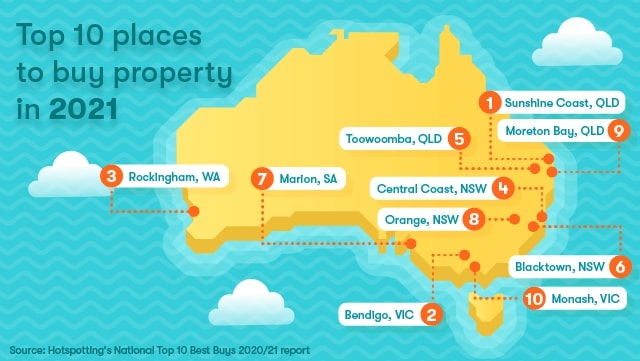
For more information about why each area is tipped for growth this year and in 2021 and what type of buyer they may be suited to, according to Hotspotting, see below.
1. Sunshine Coast, Qld
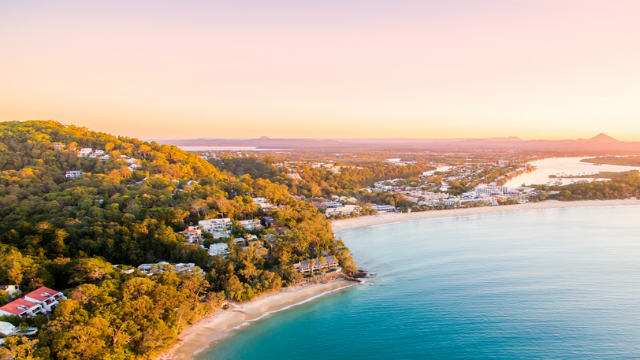 Noosa boasts some of the biggest property price growth in the country. Source: Darren Tierney (Shutterstock).
Noosa boasts some of the biggest property price growth in the country. Source: Darren Tierney (Shutterstock).
- Located: Around 100km north of Brisbane, stretching 55km from Caloundra to Noosa.
- Strong performers: Riskwise Property Research recently dubbed Coolum Beach and Peregian Beach two of Australia’s top 10 suburbs to retire. Noosa Heads, Sunrise Beach, Sunshine Beach, Warana and Yaroomba have long-term capital growth averages between 5-7% per year.
- Property profile: In the Sunshine Coast council area, 74% of people live in houses and 24% live in units. Beachside and lifestyle areas have recorded the strongest increases in house prices in the past 12 months. Houses can be purchased below median values of $500,000 in some areas, including Caloundra West and Nambour. By comparison, Mooloolaba median house prices are around $900,000 and Noosa Heads around $1.18 million. Unit prices in Sunshine Beach and Noosa Heads report long-term growth of 5% per year.
- Local economy: The Sunshine Coast economy has grown 4% per year on average over the last 15 years, dominated by the tourism, retail and construction sectors. New industries, including a $5 billion health precinct, have helped to diversify and strengthen the local economy, which is now in the top 10 leading regions for employment generation across the country.
- Projects boosting capital growth prospects include: A new 53-hectare Maroochydore CBD, expansion of the Sunshine Coast Airport to include international flights, the University of the Sunshine Coast’s ongoing expansion to become Australia’s first university town and more than $1 billion worth of upgrades to the Bruce Highway.
2. Bendigo, Vic
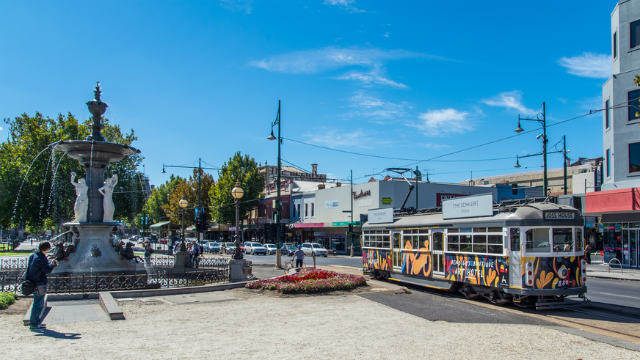 Central Bendigo has the convenience of Tramways. Source: Nils Versemann (Shutterstock).
Central Bendigo has the convenience of Tramways. Source: Nils Versemann (Shutterstock).
- Located: Around 130km north-west of Melbourne.
- Strong performers: Strathdale saw an 18% increase over the year to a median house price of around $490,000, based on CoreLogic data cited in the report. Kangaroo Flat is one of the busiest suburbs with 182 annual sales, the report noted.
- Property profile: Bendigo has seen rising sales activity, which Hotspotting says is an indicator of future price growth. Many Bendigo suburbs have median house prices in the $300,000s. Rental yields range from 4.5% to 5.5%, and vacancy rates have been below 3% since a sharp downturn in April 2020, with most suburbs now below 1%.
- Local economy: The retail and industrial sectors bolster the local economy, along with tourism, medical services, agriculture, forestry and mining. Bendigo Bank is also based there, which is a major regional and national bank. Known for its history as a gold mining town in the mid-19th century, until 2012 Bendigo was also home to one of only three licensed stock exchanges in Australia – the Bendigo Stock Exchange.
- Projects boosting capital growth prospects include: A $2 billion Regional Rail Revival program by the Victorian government to allow trains to eventually run every 20 minutes, an upgrade to Bendigo Senior Secondary College and the creation of a ‘Gov Hub’ in Bendigo which would bring 1,000 public sector jobs.
3. Rockingham City, WA
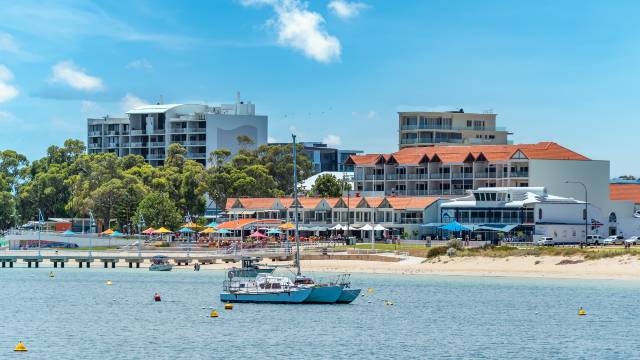 Palm beach in Rockingham, Western Australia. Image source: Ric Jacyno, Shutterstock.
Palm beach in Rockingham, Western Australia. Image source: Ric Jacyno, Shutterstock.
- Located: About 40km south-west of the Perth CBD.
- Strong performers: Baldivis, Port Kennedy, Rockingham, Safety Bay, Secret Harbour and Waikiki are classified as rising markets. Port Kennedy is one of the leading markets with sales activity up 88%.
- Property profile: In Rockingham, 23% of people own their homes outright, while 48% have home loans and 26% rent. Most suburbs have a median house price below $350,000, and vacant land has an average land price of around $173,000. According to Hotspotting, the area’s seaside lifestyle, transport links, proximity to work opportunities, high rental returns and low vacancies make it a “prime target” for first home buyers.
- Local economy: Rockingham is part of the Western Trade Coast, which is a gateway to industry and trade with China and South East Asia. Local industries include tourism, a nickel refinery, aquaculture and horticulture. It’s a popular location for FIFO workers and the Defence Force.
- Projects boosting capital growth prospects include: The building of the $56 million Baldivis District Sporting Complex, expansion of the Secret Harbour Shopping Centre, new defence facilities at the HMAS Stirling naval base and a new train station to begin construction this year at Lakelands.
4. Central Coast, NSW
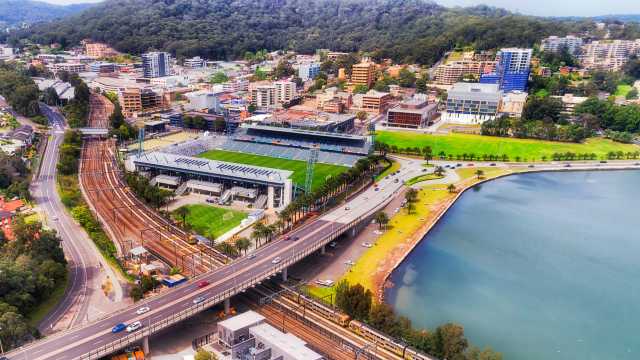 Gosford, Central Coast NSW. Image source: Taras Vyshnya, Shutterstock.
Gosford, Central Coast NSW. Image source: Taras Vyshnya, Shutterstock.
- Located: About 95-125km or one to two hours north of Sydney by car.
- Strong performers: Ettalong Beach and Tumbi Umbi were both classified as “notable” rising markets, with house prices up 13% in 2020. Long Jetty and Umina Beach recorded price increases of 11%.
- Property profile: Vacancy rates are at their tightest point in 15 years, with a steady stream of people moving from Sydney to the Central Coast region. There are 17 suburbs with rising sales activity, translating to price growth. Blue Haven, Gorokan, Gwandalan, Kanwal, Lake Munmorah, San Remo and Toukley have median house prices below $600,000 – that complies with the first home buyer grant rules in NSW.
- Local economy: The Central Coast has rail and road links that make it popular with manufacturing businesses including Sanitarium and MarsFoods. Health and education sectors are on the up and Erina Fair Shopping Centre is one of the biggest regional shopping centres in Australia.
- Projects boosting capital growth prospects include: Gosford and Wyong public hospitals are both set to have major redevelopments, the M1 is being widened between Kariong an Somersby, there is a proposed upgrade of Warnervale Town Centre and a planned expansion of the University of Newcastle to include a Gosford campus.
5. Toowoomba, Qld
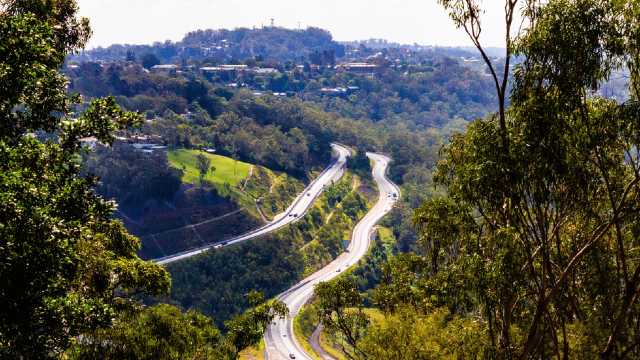 Toowoomba has been named one of Hotspotting’s top picks for investors in 2021. Image source: Ashjain, Shutterstock.
Toowoomba has been named one of Hotspotting’s top picks for investors in 2021. Image source: Ashjain, Shutterstock.
- Located: About 125km west of Brisbane, in the Darling Downs region.
- Strong performers: According to the CoreLogic data cited in Hotspotting’s report, the biggest price increase in Toowoomba over the past 12 months was 13% in Mount Lofty, where the median price is now around $480,000. Other noteworthy suburb growth stories included Wilsonton Heights (+8%), South Toowoomba (+5%), East Toowoomba (+4%) and Wilsonton (+4%).
- Property profile: Toowoomba had the highest uptake of the HomeBuilder grant and the First Home Loan Deposit Scheme nationally in 2020. Centenary Heights, Harristown, Newtown, North Toowoomba, South Toowoomba, Wilsonton and Wilsonton Heights have median house prices under $400,000. The vacancy rate is now around 0.5% – the lowest point since May 2010.
- Local economy: Toowoomba is one of Australia’s largest regional centres, with industries including education, manufacturing, health, retail and agriculture. Healthcare is the largest industry according to the latest Census, employing around 15% of people. Agriculture is the largest in terms of the number of businesses, with cattle, cotton and wheat the main commodities in that sector.
- Projects boosting capital growth prospects include: A new Toowoomba hospital has been proposed, a Qantas Training Academy completed and a medicinal marijuana farm proposed. In terms of transport and energy infrastructure, the Toowoomba Second Range Crossing has recently been completed, while an Inland Rail project is under construction and the Wandoan battery project has been approved which would power 57,000 homes.
6. Blacktown City, NSW
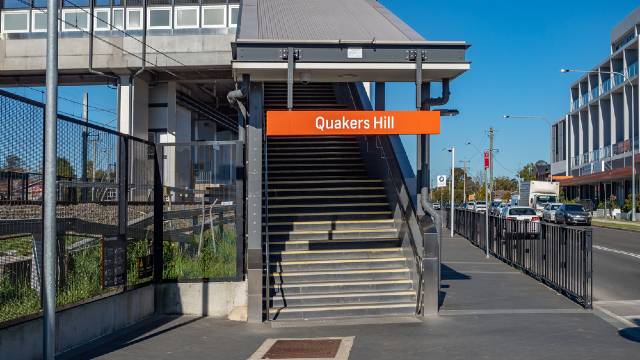 Quakers Hill is a suburb in Blacktown City, NSW. Image source: Cromo Digital, Shutterstock.
Quakers Hill is a suburb in Blacktown City, NSW. Image source: Cromo Digital, Shutterstock.
- Located: About 34km west of the Sydney CBD, in the Greater Western Sydney region.
- Strong performers: Quakers Hill, Seven Hills and Toongabbie all saw median house prices increase 8% in the past year.
- Property profile: The HomeBuilder grant has pushed along a recent upturn in activity in the area. Median house prices in many suburbs in the Blacktown area are around $600,000, and the median unit price at Blacktown is around $495,000.
- Local economy: Western Sydney is Australia’s third-largest economy. A notable business facility is the $2 billion Sydney Business Park located in Marsden, which hosts Costco, Bunnings, Ikea and more, while Westpoint Blacktown is one of the biggest shopping centres in Sydney.
- Projects boosting capital growth prospects include: Construction of the Blacktown Mt Druitt hospital expansion, redevelopment of the Westmead hospital, addition of an Australian Catholic University campus at Blacktown for 5,000 students and the $1.49 billion rezoning and redevelopment of Mt Druitt CBD.
7. City of Marion, SA
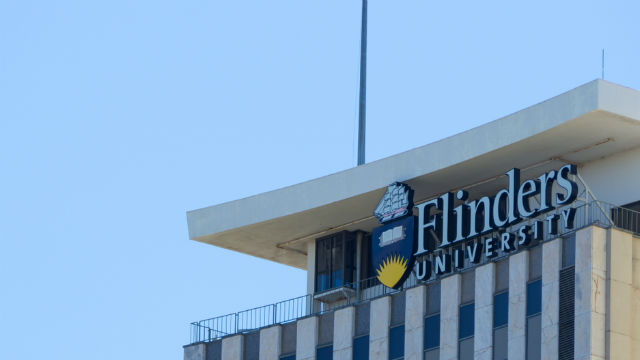 Flinders University is based in Marion and scheduled for an upgrade to its educational facilities. Source: ArliftAtoz2205 (Shutterstock).
Flinders University is based in Marion and scheduled for an upgrade to its educational facilities. Source: ArliftAtoz2205 (Shutterstock).
- Located: About 8-20km south and south-west of Adelaide CBD.
- Strong performers: Mitchell Park and Clovelly Park are ideally located close to the university and Westfield shopping facilities. Plympton and Trott Park have seen average annual growth in median house prices around 3% over the past 10 years. Hallett Cove has the highest turnover of dwellings in the last 12 months, at 183 sales.
- Property profile: Marion has value-for-money appeal and is close to key infrastructure, including the Tonsley innovation centre and the Flinders university-medical precinct. Many suburbs have median house prices in the $400,000s and have seen annual growth in median house prices generally around 2% per year over the past 10 years. The median house price in Marion is now around $520,000.
- Local economy: The workforce is made up of many young and professional people. The city’s economy is built around a future in modern technology, health and education.
- Projects boosting capital growth prospects include: The regeneration of the Tonsley precinct to be an innovation district (the Tesla group’s first Australian battery and electric cars service centre is located here, as well as Flinders University and TAFE campuses), major transport projects including an extension of the Tonsley rail line to Flinders Medical Centre, and the Glenthorne National Park development.
8. Orange, NSW
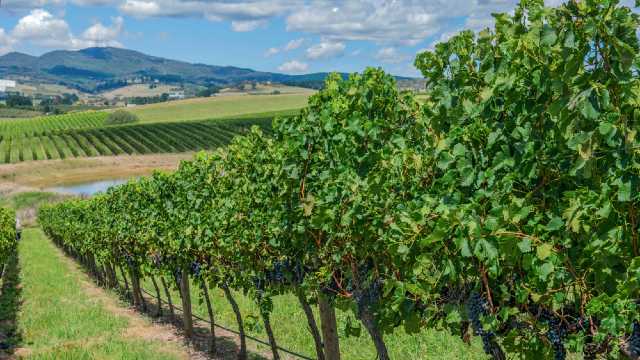 Orange is famous for food and wine production. Image source: Alf Manciagli, Shutterstock.
Orange is famous for food and wine production. Image source: Alf Manciagli, Shutterstock.
- Located: In the Central Tablelands region of New South Wales, about 250km west of Sydney.
- Strong performers: Propertyology dubbed Orange one of the best markets for capital growth and rental income growth in the last five years, with increases of 40% and 15% respectively.
- Property profile: The area has a median house price of around $440,000 based on CoreLogic’s data, with the typical house fetching $375 in rent and a median rental yield of 4.4%. The vacancy rate has been below 3% since 2015 and is now down around 0.2%.
- Local economy: Orange is not dependent on agriculture or mining – though both have a big presence – but has a diversified local economy with strong employment in education, health and community services as well. Orange is also well-known as a fruit-growing area, which has led it to be a popular food and wine destination for people visiting from Sydney.
- Projects boosting capital growth prospects include: A makeover of the Orange CBD precinct, the proposed construction of a Renewable Energy Zone to begin in 2022, an expansion of the Cadia gold mine, the construction of several government departments in the former Orange Base Hospital and several road and rail upgrades.
9. Moreton Bay Region, Qld
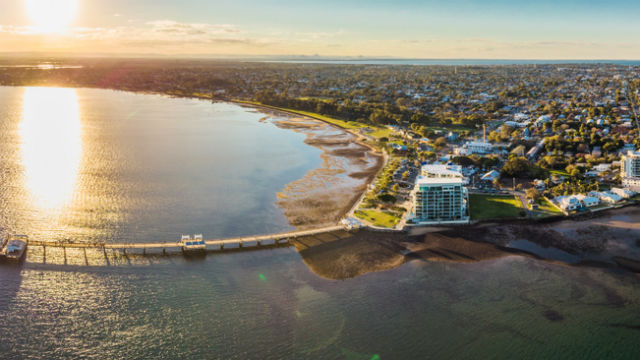 Woody Point Jetty is as popular location to visit in the Moreton Bay Region. Source: Martin Valigursky (Shutterstock).
Woody Point Jetty is as popular location to visit in the Moreton Bay Region. Source: Martin Valigursky (Shutterstock).
- Located: Around 50km north of the Brisbane CBD.
- Strong performers: Narangba showed the highest growth in asking rents for units in the 12 months to November, up 16% to $397 a week. Mango Hill and North Lakes were fetching around $450 a week. Almost all suburbs within the region have vacancy rates below 1.3%.
- Property profile: The Moreton Bay Region has been the best-performing Brisbane property market, with increasing sales despite COVID-19. A median house price of around $345,000 can be found at Caboolture and $485,000 at North Lakes. Demand is expected to lift at Petrie, Strathpine, Lawnton and Bray Park now that the Moreton Bay campus for the University of the Sunshine Coast has reached completion.
- Local economy: The Caboolture area in particular has changed in recent decades from a former agricultural centre and timber-led industry into an urban village. Moreton Bay’s major centres all have fairly easy access to the Brisbane CBD, Brisbane Airport and major transport routes.
- Projects boosting capital growth prospects include: The USC Moreton Bay campus is now operational, while there is a proposed development of the $2 billion North East Business Park, a $395 million Caboolture Hospital upgrade is due to be completed by 2023 and there is a proposed $9.5 billion Caboolture West Master Plan development which will cover 6,500 hectares of land west of Caboolture and Morayfield.
10. Monash City, Vic
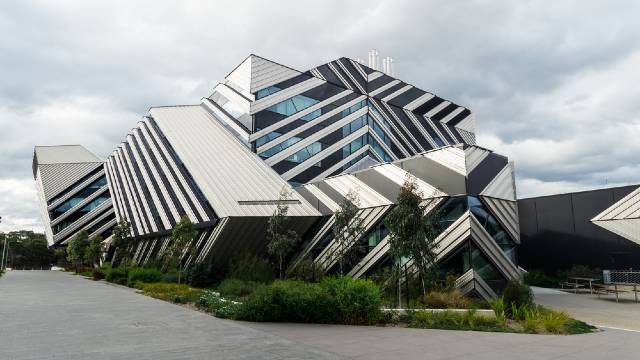 Monash University is located in Monash City, Melbourne. Image source: Nils Versemann, Shutterstock.
Monash University is located in Monash City, Melbourne. Image source: Nils Versemann, Shutterstock.
- Located: In the south-eastern suburbs of Melbourne.
- Strong performers: The suburbs of Chadstone, Mount Waverley and Mulgrave have rising buyer demand. Suburbs with double-digit increases in median house prices in the past 12 months included Ashwood (+12%), Chadstone (+18%) and Wheelers Hill (+11%).
- Property profile: The majority of houses in this precinct record median house prices from $1.1 million to $1.3 million, with average annual growth in the last 10 years in most suburbs being 6-7%. Units are more affordable than houses, with lower median unit prices to be found in Oakleigh ($555,000), for instance, which also offers a rental return of 4% on a weekly median rent of $430.
- Local economy: Monash is a hub for ‘high-tech’ industry, being home to Australia’s largest university in terms of student numbers, Monash University, and the CSIRO. The healthcare and social assistance sector employs the most people, followed by retail and professional, scientific and technical services.
- Projects boosting capital growth prospects include: An expansion of the Glen Shopping centre and Monash University, the opening of Australia’s first dedicated heart hospital in 2022, a proposed $50 billion Suburban Rail Loop and the Monash Freeway upgrade.



